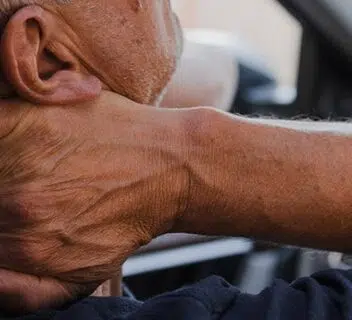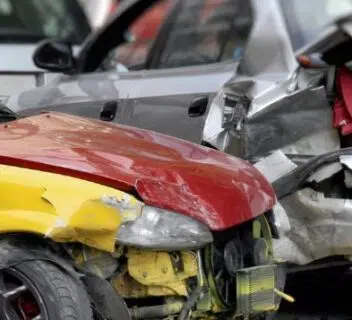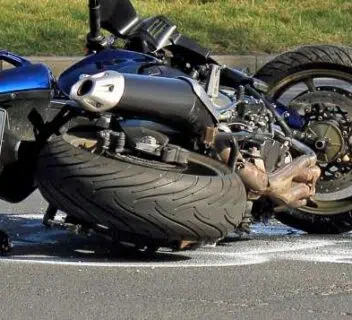Whiplash affects millions. Knowing whiplash facts helps with early diagnosis, treatment, and prevention. This article covers its causes, symptoms, and treatments.
Key Takeaways
- Whiplash can occur in low-speed collisions and is often underestimated due to delayed symptoms; seeking medical attention after any auto accident is critical.
- Common causes of whiplash extend beyond car accidents to include sports injuries, falls, and physical abuse, highlighting the need for neck protection in various activities.
- Effective treatment typically involves early intervention with heat or cold therapy, physical therapy, and possibly alternative treatments; legal representation is crucial for maximizing the likelihood that you’ll be able to secure compensation (due to the subjective nature of many symptoms).
Whiplash Facts: Understanding Whiplash Injuries
Whiplash is a term that many of us have heard but few truly understand. It’s a deceptive injury that can result from a sudden, forceful movement of the head, typically occurring during a rear-end car accident. More than two million Americans experience whiplash each year, highlighting just how common this injury is. Despite its prevalence, there are many misconceptions about whiplash injuries.
One of the biggest misconceptions is that whiplash only occurs in severe car accidents. In reality, even low-speed collisions can cause significant neck injuries, making it important to seek medical attention after any auto accident, regardless of how minor it may seem. Whiplash injuries can affect the soft tissues, including muscles, ligaments, and tendons, leading to severe neck pain and other symptoms that may not be immediately apparent. A soft tissue injury can also occur in these situations, including when auto injuries occur.
Moreover, whiplash is often underestimated because its symptoms can be delayed. Unlike broken bones that are immediately evident, whiplash symptoms can develop over hours or even days. This delay can lead to underreporting and undertreatment, exacerbating the problem and potentially leading to chronic issues. Being aware of these facts about whiplash facts is crucial for better neck health and effective treatment.
Causes of Whiplash
Rear-end car crashes are the most common cause of whiplash injuries. The sudden impact forces the head to snap back and forth, causing strain on the cervical spine and surrounding soft tissues. However, car accidents are not the only culprits. Whiplash can also result from sports injuries, falls, and physical abuse.
Whiplash injuries can occur in diverse scenarios, including:
- high-impact sports like football, due to rapid and forceful movements
- Falls that involve a sudden jolt to the neck
- Physical abuse, such as being punched or shaken. These situations can lead to significant neck injury, neck pain, and other symptoms. Injuries happen in these contexts, resulting in pain and discomfort.
Recognizing these diverse causes emphasizes the importance of protecting your neck in various situations, not just in car accidents. Whether playing sports, engaging in physical activities, or even just walking down the stairs, being aware of the risks that are commonly caused allows you to take preventive measures for a better understanding of how to avoid these painful and often debilitating injuries.
Common Symptoms of Whiplash
Identifying the symptoms of whiplash is vital for early diagnosis and treatment. Common symptoms include:
- Neck pain
- Headaches
- Dizziness
- Psychological effects like irritability and anxiety
These symptoms can significantly impact daily life, making even simple tasks challenging and uncomfortable, leading to potential complications and sustained force involved.
One of the most deceptive aspects of whiplash is the delayed onset of symptoms. Symptoms can develop over hours, days, or even weeks after the initial injury. This delay can lead to a false sense of security immediately after the incident, causing many to forgo medical attention. Monitoring any changes in your condition following an accident or injury is essential.
Besides the common symptoms, whiplash can also cause blurred vision, difficulty concentrating, and sleep disturbances. These additional symptoms can further complicate the recovery process, making comprehensive medical care necessary to address all aspects of the injury. Chiropractors and other healthcare professionals can provide tailored treatment plans to help manage and alleviate these symptoms effectively.
Long-Term Effects of Whiplash
The long-term effects of whiplash can be debilitating, impacting both physical and emotional health. While most people recover within a few weeks to months, some may experience chronic symptoms that persist for years. Chronic pain is one of the most common long-term effects, often accompanied by stiffness and reduced range of motion.
Emotional and psychological effects are also prevalent among long-term whiplash sufferers. Irritability, anxiety, and memory issues can arise, complicating the recovery process. These emotional changes can be just as challenging as the physical symptoms, requiring a treatment approach that addresses both aspects comprehensively.
Additionally, chronic headaches and sleep disturbances are frequent long-term whiplash symptoms of whiplash. These issues can significantly affect your quality of life, making ongoing medical care and support crucial. Chiropractic care and physical therapy can help manage these effects, promoting better neck health and overall well-being.
Treatment Options for Whiplash
Early intervention is key in treating whiplash. Initial treatments often include applying heat or cold to the neck to alleviate pain and reduce inflammation. In some cases, a foam collar may be used to provide immediate relief by limiting neck movement, although prolonged use is discouraged to avoid weakening the muscles.
Prescription medications, including certain antidepressants, can manage severe pain associated with whiplash. Alternative treatments like acupuncture and massage therapy may also offer temporary relief from neck pain. These treatments are particularly beneficial when used alongside other therapies to provide a holistic approach to recovery.
Physical therapy is a cornerstone of whiplash treatment, often involving personalized exercise programs aimed at improving strength, posture, and range of motion while relieving pain. Most whiplash injuries can be treated effectively without surgery, relying on non-invasive methods to promote recovery and prevent chronic symptoms. Healthcare professionals, including chiropractors and physical therapists, can help you develop a comprehensive treatment plan tailored to your needs.
Legal Aspects of Whiplash Injuries
Navigating the legal aspects of whiplash injuries can be challenging due to the subjective nature of the symptoms and the lack of visible injuries on imaging tests. This can make it difficult to secure compensation, emphasizing the importance of timely claims and having quality legal representation. Delays in filing a claim can negatively impact its value (and your ability to sue and recover damages), so acting swiftly is crucial.
The success of a whiplash injury claim often hinges on the quality of evidence provided and how it is presented in the context of litigation. Common forms of evidence needed to support a claim include:
- Medical records
- Accident reports
- Witness statements. A knowledgeable attorney can significantly affect the outcome, ensuring that you get a chance to present your case properly and potentially receive compensation for your injuries.
Damages in a whiplash injury lawsuit can include lost wages, medical expenses, and pain and suffering for those who are injured. Most personal injury lawyers work on a contingency fee basis, meaning clients pay nothing upfront, making legal representation accessible without the burden of upfront costs.
If you’ve suffered a whiplash injury, contact 1-800-THE-LAW2 for a free consultation with a qualified attorney to discuss your whiplash-related issues and to explore your legal options.
Settlements for Whiplash Injuries
Securing a fair settlement for a whiplash injury requires establishing that another party’s negligence caused the accident and any resulting injuries. Victims can claim damages for medical expenses, lost wages, and pain and suffering. The potential compensation amount can vary significantly based on the severity of the injury, required medical treatment, and its impact on daily life.
Whiplash settlements can range from thousands of dollars to hundreds of thousands of dollars (or even millions) for cases involving particularly severe injuries. For more information about the average settlement for back and neck injury, insurance companies often minimize the seriousness of whiplash claims, making strong legal representation essential to advocate for your rights.
More than 95 percent of whiplash cases are resolved through negotiation in most cases, highlighting the importance of a fair and knowledgeable approach to settlements. Factors affecting the fairness of a settlement offer include the strength of the evidence and the defendant’s willingness to settle. Comprehensive documentation and a skilled attorney can make a significant difference in the outcome of your case.
Summary
In summary, understanding whiplash is crucial for maintaining neck health and seeking appropriate treatment. From recognizing the causes and symptoms to exploring long-term effects and treatment options, being informed can help you take proactive steps towards recovery. Whiplash is a complex injury with many facets, but with the right knowledge and support, you can manage its impact effectively.
If you or someone you know is suffering from whiplash, don’t hesitate to seek medical and legal help. Early intervention and comprehensive care are key to preventing chronic symptoms and ensuring a smoother recovery. Remember, whiplash is more than just a neck injury—it’s a condition that requires thorough attention and care to achieve the best possible outcome.
Frequently Asked Questions
Whiplash is a neck injury resulting from a sudden, forceful movement of the head, often due to rear-end car accidents, sports injuries, falls, or physical abuse. Recognizing the causes can help in prevention and management.
Common symptoms of whiplash include neck pain, headaches, dizziness, fatigue, blurred vision, and difficulty concentrating. Recognizing these signs early can facilitate prompt treatment for effective recovery.
Whiplash symptoms typically last a few weeks to months for most individuals, but some may experience chronic symptoms that can persist for years.
Whiplash can lead to chronic pain, stiffness, emotional issues such as anxiety, and persistent headaches. It’s important to address these potential long-term effects proactively.
To pursue compensation for a whiplash injury, establish that another party’s negligence caused the accident and gather strong evidence, including medical records and accident reports. Engaging experienced legal representation will further enhance the likelihood of a successful claim.











